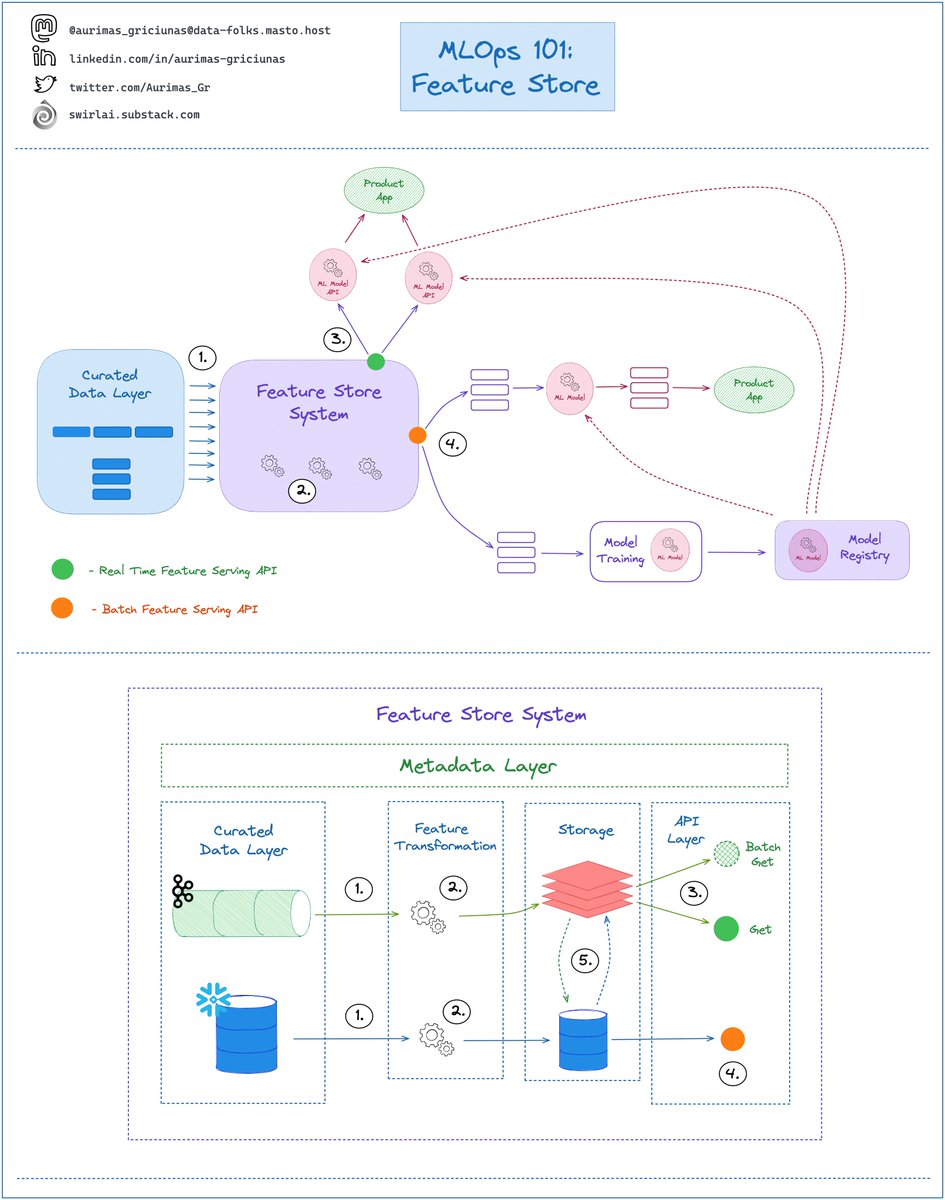
𝗡𝗼 𝗘𝘅𝗰𝘂𝘀𝗲𝘀 𝗗𝗮𝘁𝗮 𝗘𝗻𝗴𝗶𝗻𝗲𝗲𝗿𝗶𝗻𝗴 𝗣𝗼𝗿𝘁𝗳𝗼𝗹𝗶𝗼 𝗧𝗲𝗺𝗽𝗹𝗮𝘁𝗲 - next week I will enrich it with the missing Machine Learning and MLOps parts!
🧵
#Data #DataEngineering #MLOps #MachineLearning #DataScience
🧵
#Data #DataEngineering #MLOps #MachineLearning #DataScience

Today - let’s review it once more. It is super helpful as these kind of Data Architectures are what you will find in real life situations.
𝗥𝗲𝗰𝗮𝗽:
👇
𝗥𝗲𝗰𝗮𝗽:
👇
𝟭. Data Producers - Python Applications that extract data from chosen Data Sources and push it to Collector via REST or gRPC API calls.
👇
👇
2. Collector - REST or gRPC server written in Python that takes a payload, validates top level field existence and correctness, adds additional metadata and pushes it into either Raw Events Topic if the validation passes or a Dead Letter Queue if top level fields are invalid.
👇
👇
3. Enricher/Validator - Python or Spark Application that validates event schema in Raw Events Topic, performs data enrichment and pushes results into either Enriched Events Topic if validation passes and enrichment succeeds or a Dead Letter Queue if any of previous failed.
👇
👇
𝟰. Enrichment API - API of any flavor implemented with Python that can be called for enrichment purposes by Enricher/Validator. This could be a Machine Learning Model deployed as an API as well.
👇
👇
𝟱. Real Time Loader - Python or Spark Application that reads data from Enriched Events and Enriched Events Dead Letter Topics and writes them in real time to ElasticSearch Indexes for Analysis and alerting.
👇
👇
𝟲. Batch Loader - Python or Spark Application that reads data from Enriched Events Topic, batches it in memory and writes to MinIO Object Storage.
👇
👇
𝟳. Scripts Scheduled via Airflow that read data from Enriched Events MinIO bucket, validates data quality, performs deduplication and any additional Enrichments. Here you also construct your Data Model to be later used for reporting purposes.
👇
👇
𝗧𝟭. A single Kafka instance that will hold all of the Topics for the Project.
𝗧𝟮. A single MinIO instance that will hold all of the Buckets for the Project.
𝗧𝟯. Airflow instance that will allow you to schedule Python or Spark Batch jobs against data stored in MinIO.
👇
𝗧𝟮. A single MinIO instance that will hold all of the Buckets for the Project.
𝗧𝟯. Airflow instance that will allow you to schedule Python or Spark Batch jobs against data stored in MinIO.
👇
𝗧𝟰. Presto/Trino cluster that you mount on top of Curated Data in MinIO so that you can query it using Superset.
𝗧𝟱: ElasticSearch instance to hold Real Time Data.
👇
𝗧𝟱: ElasticSearch instance to hold Real Time Data.
👇
𝗧𝟲. Superset Instance that you mount on top of Trino Querying Engine for Batch Analytics and Elasticsearch for Real Time Analytics.
👇
👇
👋 I am Aurimas.
I will help you Level Up in #MLOps, #MachineLearning, #DataEngineering, #DataScience and overall #Data space.
𝗙𝗼𝗹𝗹𝗼𝘄 𝗺𝗲 and hit 🔔
Join a growing community of 5200+ Data Enthusiasts by subscribing to my 𝗡𝗲𝘄𝘀𝗹𝗲𝘁𝘁𝗲𝗿: swirlai.substack.com/p/sai-15-whats…
I will help you Level Up in #MLOps, #MachineLearning, #DataEngineering, #DataScience and overall #Data space.
𝗙𝗼𝗹𝗹𝗼𝘄 𝗺𝗲 and hit 🔔
Join a growing community of 5200+ Data Enthusiasts by subscribing to my 𝗡𝗲𝘄𝘀𝗹𝗲𝘁𝘁𝗲𝗿: swirlai.substack.com/p/sai-15-whats…
Also join the SwirlAI Data Talent Collective that will help you find your next career step: swirlai.pallet.com/talent/welcome…
• • •
Missing some Tweet in this thread? You can try to
force a refresh










